1. What is a species?
A species in the animal world is often defined according to whether two individual members, one male, one female, can produce fertile offspring, usually by sexual reproduction.
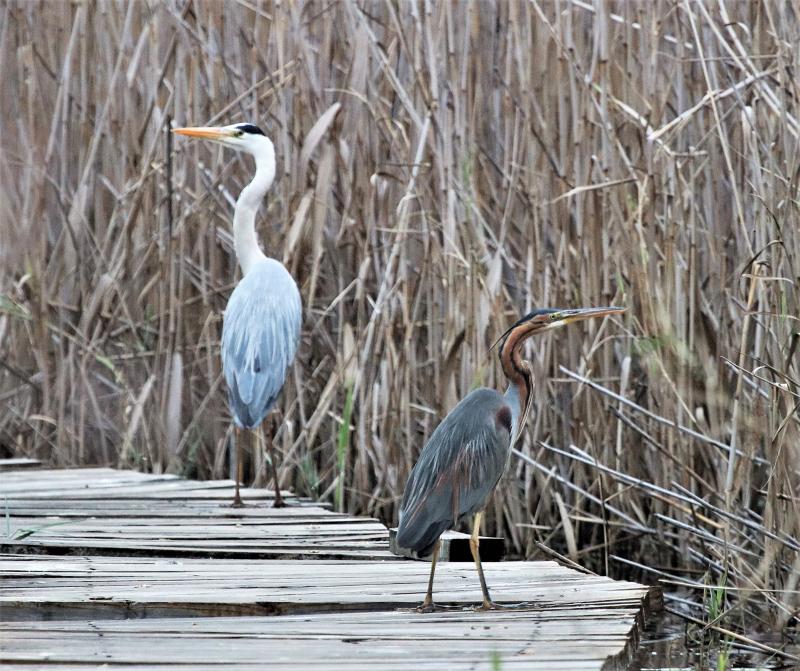
Purple Heron and Grey Heron
No physical attraction between these two species. And no purple grey herons as far as we know. These reluctant companions were interrupted while fishing from a walkway as I was making my way to a hide on Bo-Langvlei, a lake near Wilderness, Western Cape.
Another way of identifying a species is through its physical appearance; all member of the species having physical features (morphology) in common.
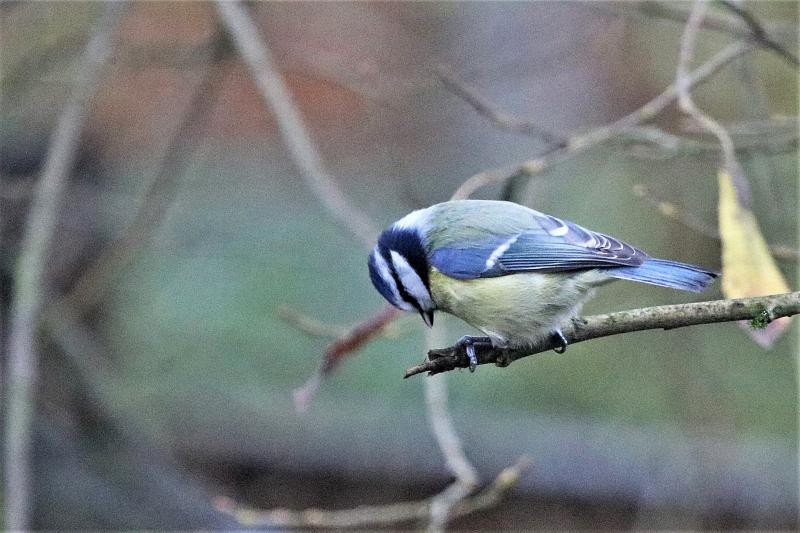
Blue Tit
Wherever you see a member of the blue tit species in Eurasia, it will have this blue, black and white feather suit and it will be of a similar size with similar beak and feet. This one was photographed in winter in a garden in Manchester, UK.
Behaviour and position in the animal or plant kingdom (ecological niche) are also considered defining features.
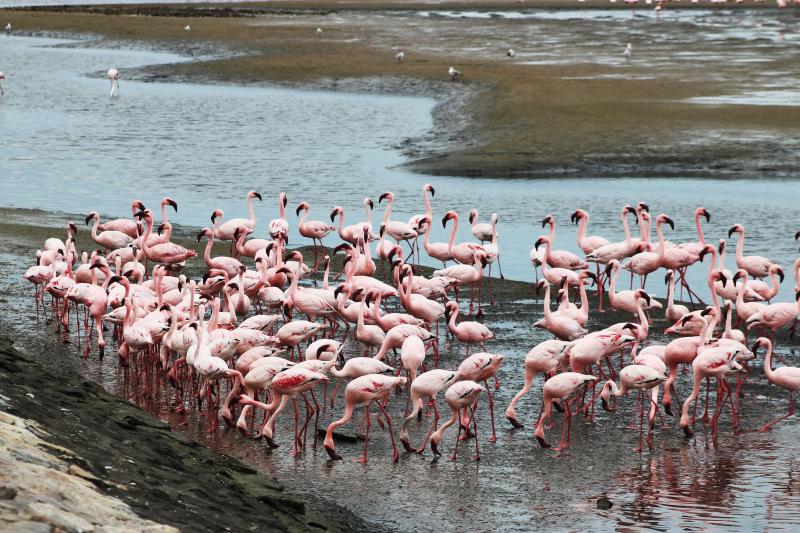
Lesser Flamingoes
These lesser flamingoes have their own ecological niche as filter feeders (see beaks and feet section), and unique social behaviour moving and feeding in sequence in large flocks. This flock performs regularly adjacent to the sea front at Walvis Bay, Namibia.
More recently, DNA analysis (see next section) has proved a rigorous approach to species identification resulting in many reclassifications of plants and animals.
The purple swamphen provides a good example:
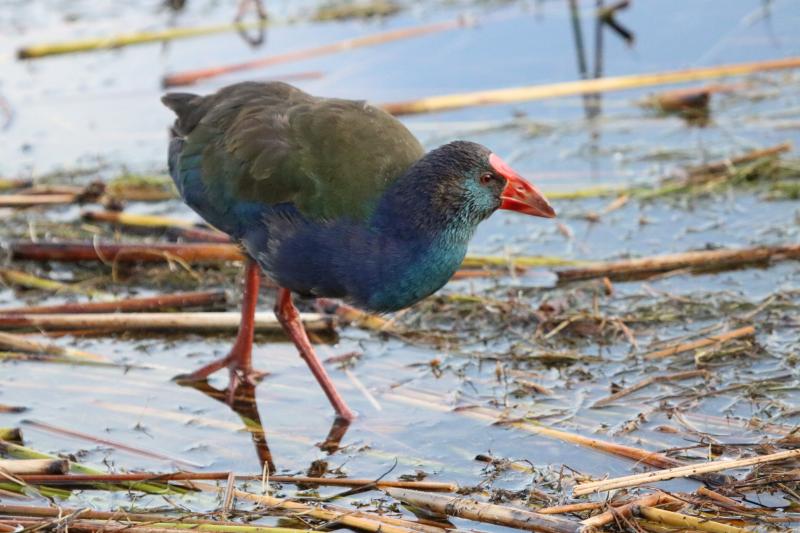
Purple Swamphen
This fully authenticated purple swamphen was busy foraging at Rondevlei near Sedgefield, Western Cape. In 2014, as a result of DNA analysis, the purple swamphen was officially divided into six species. One of these, the grey-headed swamphen, I photographed with difficulty from a moving boat at Khao Sam Roi Yet National Park, Thailand where they can be found in large numbers.
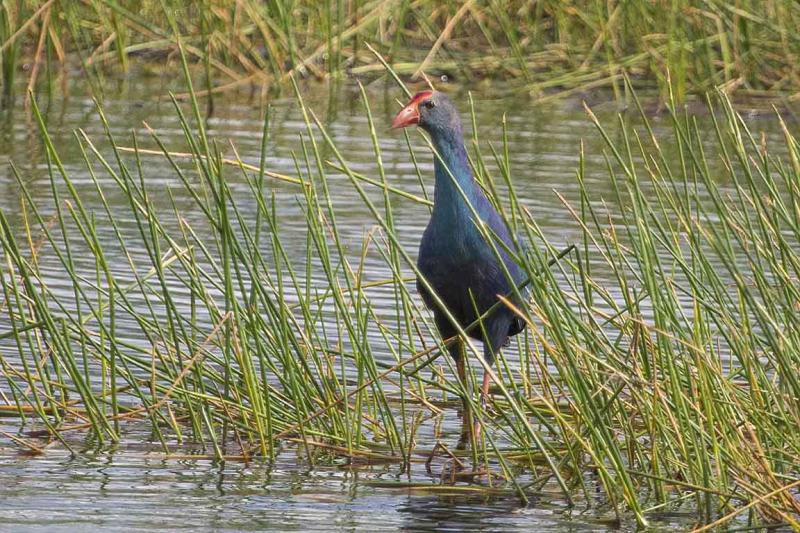
Grey-headed Swamphen
As of October 2020 a plaque describing the bird on the wetland walkway still refers to the purple swamphen. There seems to be some debate over the new classification as yet unresolved. This is one of many debates over the classification of species particularly since the arrival of DNA analysis, and why there is controversy over the number of avian species in the world. Is it 10,000 or if more recent subdivisions are accepted, nearer 18,000?
Taxonomy
A species is the basic unit for classifying members of both fauna and flora. But lets start at the highest level. According to the latest scientific evidence, life is divided into three main kingdoms or domains: fauna (animals), including birds of course, flora (plants) and, thirdly life forms without a nucleus (prokaryotes). At the next level, "Phyla", birds belong to the chordata, (verterbrates being the most familiar), along with mammals, reptiles, amphibians and fish. The following level is where birds are on their own in the class "Aves". Aves are split into 23 "Orders" with each order containing birds that have characteristics in common. Over half of Aves are in the Order Passeriforms (passerines). They are identified, amongst other features, by their feet consisting of three forward toes and one facing backwards (Anisodactyl). They are known as the perching birds.
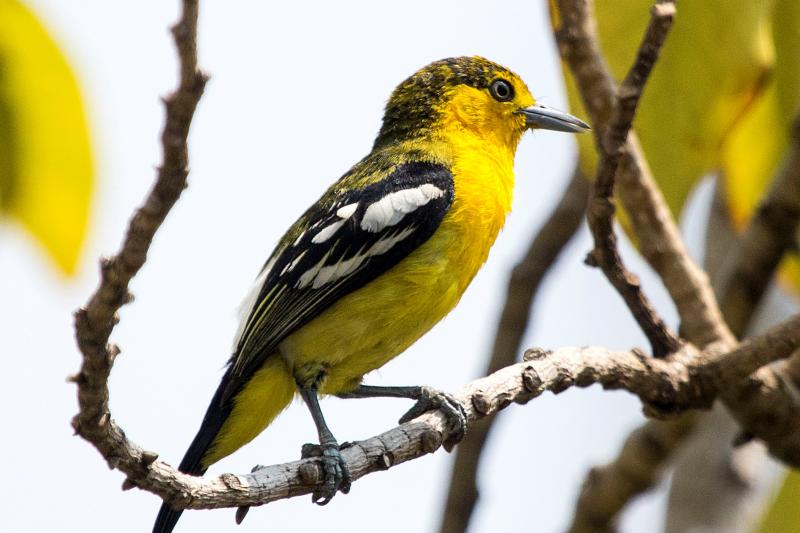
Common Iora
The common iora is a typical passerine as you can see from the foot gripping the branch of a tree in the centre of Bangkok. A tendon in the the leg running to a muscle in the foot automatically tightens when the bird bends its leg so the foot clenches when the bird perches. This enables passerines to sleep securely when perched.
Taxonomy and the Heron Family
The other 22 smaller Orders include the Order "Ciconiiformes", two members of which are the purple heron and the grey heron, shown in the first picture in this section. Ciconiiforms tend to be larger birds with long necks, long straight and slender bodies, long legs and four unwebbed toes.The grey heron, like many members of the Ciconiiforms, feeds in and around water and is widely distributed in wetlands and salt water marshes in both tropical and temperate regions, although they nest and roost in trees.
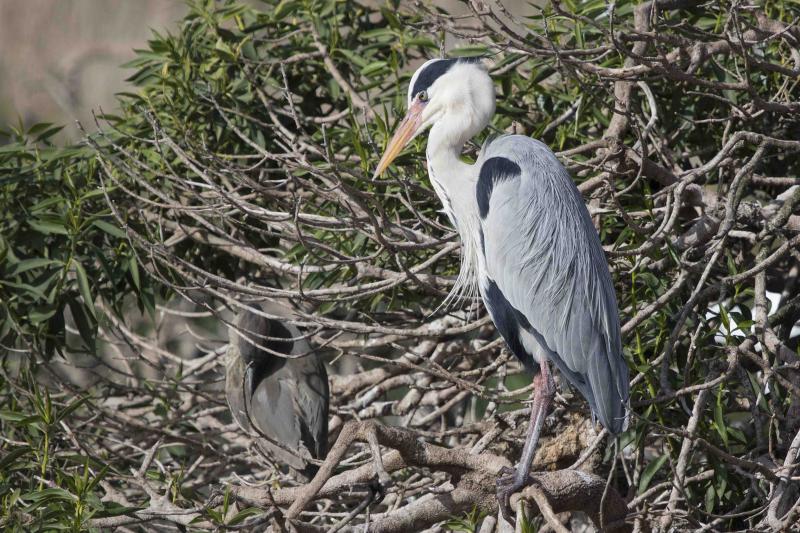
Grey Heron (Ardea Cocoi)
The grey heron above, one of around 120 species in the Ciconiiforms, was photographed on a small lake on Thesen Island, Western Cape.
There are eight "Families" in the Order Ciconiiformes. Herons egrets and bitterns make up the "Ardeidae" family. They fly with their necks in an "S" shape position, a unique trait and one that easily distinguishes them from their straight necked cousins in other families in Order Ciconiiformes, such as the storks, cranes, flamingoes and spoonbills.
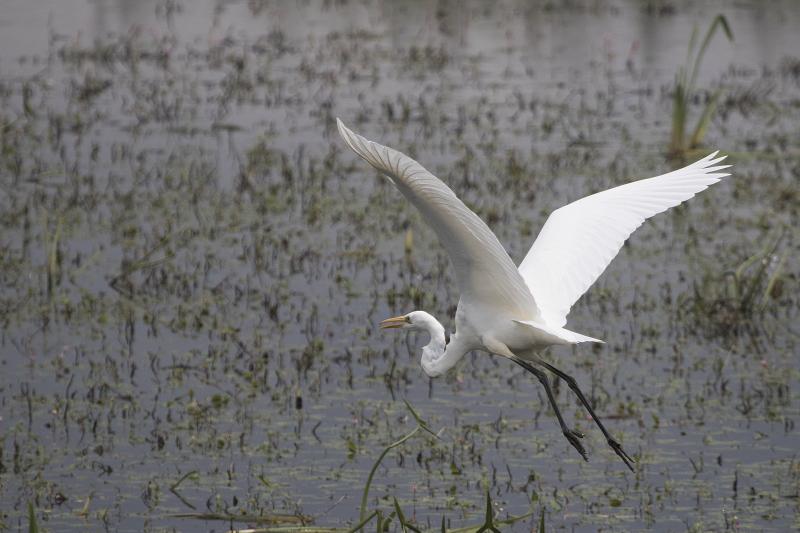
Great Egret (Ardea Alba)
A great egret flies across the Somerset Levels, UK where it is still an unusual sighting so far North. Note the curved neck that distingushes the Ardeidae family members.
Ardeidae also have spear-like bills that are formidable hunting weapons and they have special neck muscles that enables them to strike prey with lightening speed.
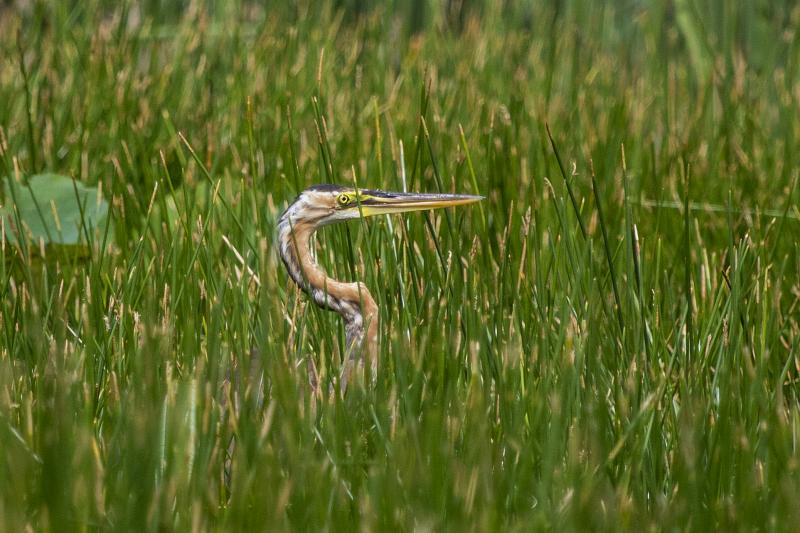
Purple Heron (Ardea Purpurea)
Note the lethal spear-like beak of this purple heron well hidden but alert as it watches from the security of the reed beds at Khao Sam Roi Yot National Park, Thailand. Its carniverous diet consists mainly of aquatic animals but also reptiles, other birds and small mammals.
Further refinement of the Family classification is provided by "Genera". The "Genus" to which herons and large egrets belong is called "Ardea". The main distinguishing feature seems to be their large size, 80 to 100 plus centimetres tall, which is why the only egrets to qualify for this family are the great and the intermediate. Even their status as Ardea is challenged by recent scientific research.
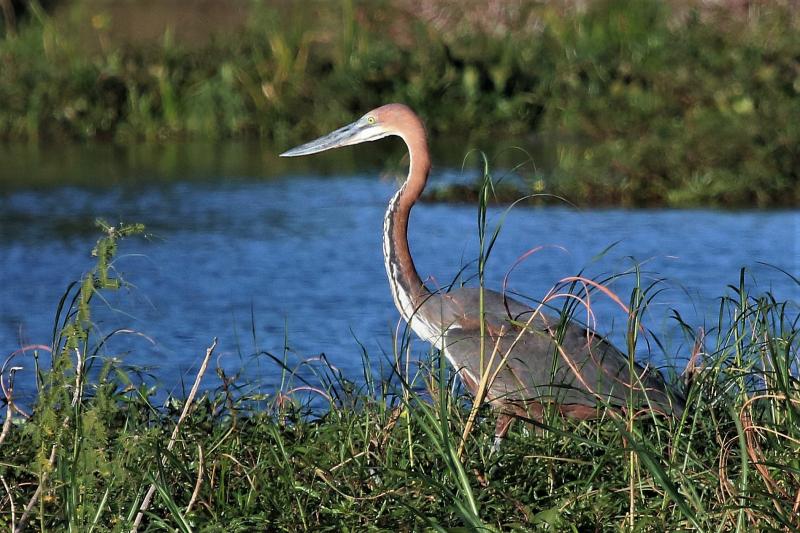
Goliath Heron (Ardea Goliath)
The largest species is the goliath heron standing 120 cm tall. This impressive individual was photographed off Msuna Island in the Zambezi River, Zimbabwe.
And now we have completed the "Taxonomic Hierarchy" with illustrations of four members of the genus Ardea: "Ardea Purpurea"(purple heron), Ardea Cocoi (grey heron), Ardea Goliath (Goliath heron) and Ardea Alba (Great Egret), a translation mismatch as the Latin alba means sunrise!). Genus (noun) plus species (adjective or adjectival noun) known as "Binomial Nomenclature".
Taxanomic Hierarchy
Kingdom Animalia
Phylum Chordata (vertebrates)
Class Aves(birds)
Order Cironiiforms (herons,storks,ibis, flamingoes spoonbills,egrets)
Family Ardeidae (herons, bitterns and some egrets)
Genus Ardea (large herons, 2 egrets)
Species Ardea Purpuria, Ardea Cocoi, Ardea Goliath, Ardea Alba etc.
Taxonomic Problems
The taxonomy described over the last few paragraphs is applied to all plants and animals and originated with the work of the great 18th Century Swedish Scientist Carl Linnaeus. Three centuries later it is still a work in progress with plenty of healthy scientific debate over who belongs where, particularly with the introduction of DNA analyse, as illustrated earlier with the debate over purple and grey-headed swamphens.
Finally, why use Latin? At the time Linnaeus was writing Latin was the "lingua france", the universal language of Science, and familiar to all his contemporaries. Secondly, as Latin is a dead language, it is stable, and reliable without innovation in grammar or vocabularly that could lead to changes in meaning.
Footnote
Science aims to impose order on the natural world. Nature resists. We have referred to debates over classification and these may never be resolved. Even a basic definition of a species is undermined by the common occurrence of hybrid ducks, of mixed heritage,which may or may not be sterile.
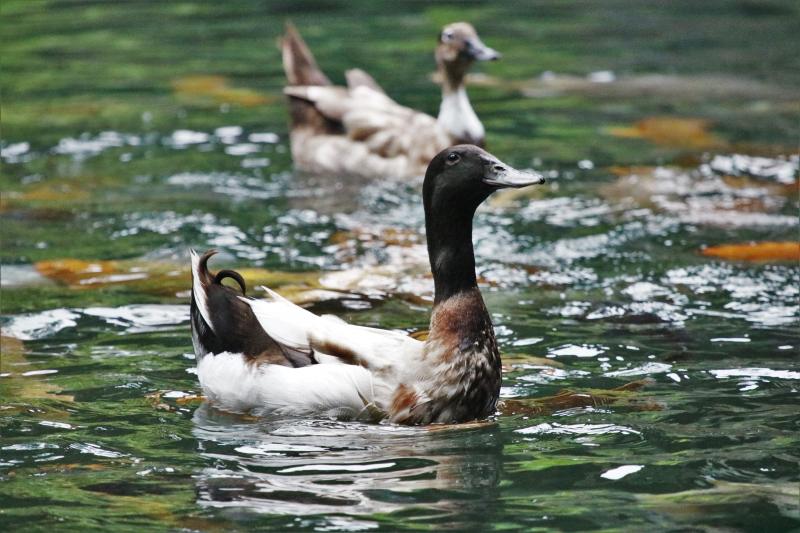
Hybrid Duck
This hybrid duck on an ornamental lake in the grounds of a temple in Bali, Indonesia, seems unperturbed by its uncertain lineage and the impact of its parents' behaviour on species definition.